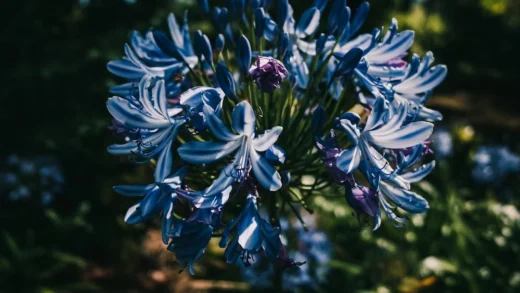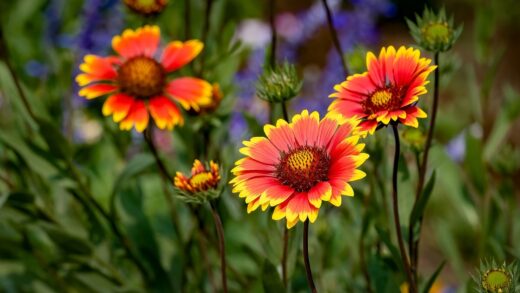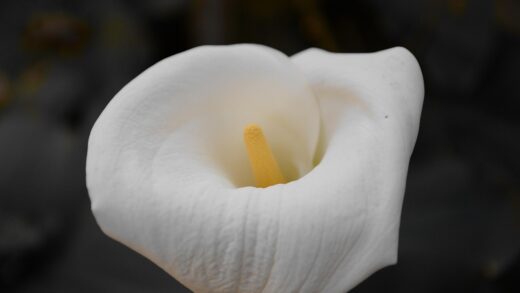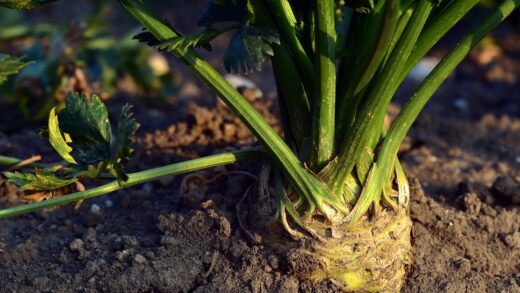The Japanese plum yew is a commendably self-sufficient plant when it comes to nutrition, generally thriving without an intensive fertilization regimen. In fact, one of its most appealing characteristics for the low-maintenance gardener is its modest appetite. When planted in reasonably fertile, well-drained soil rich in organic matter, it can often sequester all the necessary nutrients directly from its environment. The goal of any supplemental feeding should not be to force rapid, unnatural growth, but rather to support the plant’s steady development, enhance its deep foliage color, and ensure its long-term health and resilience, particularly in less-than-ideal soil conditions.
Assessing the soil’s natural fertility
Before applying any fertilizer, it is crucial to first understand the existing nutrient profile of your soil. The Japanese plum yew’s needs are modest, and adding unnecessary fertilizers can do more harm than good, potentially leading to nutrient imbalances or even burning the plant’s sensitive roots. The most accurate way to assess your soil is through a professional soil test, which can be obtained through a local university extension service. This test will provide a detailed report on the soil’s pH level and the availability of major nutrients like nitrogen, phosphorus, and potassium, as well as essential micronutrients.
In the absence of a professional test, a visual assessment of the soil and the surrounding plant life can provide valuable clues. A healthy, fertile soil is typically dark, crumbly, and rich with life, such as earthworms. If the existing plants in the area, including weeds, are growing vigorously and have a healthy green color, it is a good indication that the soil is reasonably fertile. Conversely, if the soil is pale, sandy, or heavy compacted clay, and other plants in the area appear stunted or have yellowing leaves, it is likely that the soil is deficient in organic matter and essential nutrients.
The plant itself is one of the best indicators of its nutritional status. A healthy, well-nourished Japanese plum yew will exhibit deep, lustrous, dark green foliage and show a modest but consistent amount of new growth each spring. If the plant’s needles appear pale green or yellowish (a condition known as chlorosis), and you have already ruled out overwatering and improper light conditions, a nutrient deficiency could be the cause. Yellowing between the veins of the needles, for instance, often points to an iron deficiency, which is common in alkaline soils.
The presence of organic matter is a key factor in natural soil fertility. Soil that has been consistently amended with compost or is regularly mulched with organic materials will have a slow and steady supply of nutrients released as the organic matter decomposes. This process creates a healthy, living soil ecosystem that is often all the fertilization a Japanese plum yew needs. If your soil is inherently poor, the first and most beneficial step is not to reach for a bag of chemical fertilizer, but to begin a program of amending the soil with compost and applying an annual top-dressing of organic mulch.
More articles on this topic
Choosing the right type of fertilizer
If fertilization is deemed necessary based on a soil test or visible signs of deficiency, selecting the appropriate type of fertilizer is the next critical step. For evergreens like the Japanese plum yew, a balanced, slow-release granular fertilizer is generally the best choice. Look for a product formulated specifically for acid-loving trees and shrubs, often labeled for hollies, rhododendrons, or azaleas. These formulations typically have a slightly higher nitrogen content to promote healthy foliage growth and contain other essential micronutrients, like iron and sulfur, that are beneficial for plants preferring acidic conditions.
Slow-release fertilizers are superior to quick-release liquid or soluble powders for established landscape plants. These granular products are designed to break down gradually over several months, providing a steady, gentle supply of nutrients that the plant can absorb as needed. This mimics the natural process of nutrient release from decomposing organic matter and avoids the risk of root burn and the flush of weak, excessive growth that can be prompted by a sudden, large dose of synthetic fertilizer. This weak growth is often more susceptible to pests, diseases, and winter damage.
Organic fertilizers are another excellent option and work in harmony with the soil’s ecosystem. Products like well-rotted manure, compost, fish emulsion, or blood meal release nutrients slowly as they are broken down by soil microbes. This process not only feeds the plant but also improves the soil structure and encourages a healthy population of beneficial microorganisms. While they may act more slowly than synthetic fertilizers, organic options provide a more holistic approach to plant nutrition and contribute to the long-term health and fertility of the garden soil.
It is important to understand the N-P-K ratio listed on fertilizer packaging, which represents the percentage of Nitrogen (N), Phosphorus (P), and Potassium (K). Nitrogen is primarily responsible for foliage growth and green color. Phosphorus is crucial for root development and energy transfer. Potassium contributes to overall plant vigor, disease resistance, and cold hardiness. A balanced fertilizer, such as a 10-10-10, or one slightly higher in nitrogen, like a 10-8-6, is typically suitable for the Japanese plum yew if a general-purpose feeding is needed.
More articles on this topic
The optimal timing and application of nutrients
The timing of fertilizer application is just as important as the type of fertilizer used. The best time to feed a Japanese plum yew is in the late winter or early spring, just before new growth begins to emerge. This timing ensures that nutrients are available in the soil as the plant breaks dormancy and enters its active growth phase. Applying fertilizer at this time supports the development of healthy new shoots and foliage throughout the spring and early summer.
A single application of a slow-release granular fertilizer in the spring is usually sufficient for the entire year. Avoid fertilizing in the late summer or autumn. Applying nutrients, especially nitrogen, late in the season can stimulate a flush of new, tender growth that will not have enough time to harden off before the first frost. This vulnerable new growth is highly susceptible to winter damage, which can set the plant back and create entry points for diseases. The plant should be slowing its growth in autumn to prepare for dormancy, and fertilization can interfere with this natural process.
When applying granular fertilizer, it is essential to do so correctly to ensure it is effective and does not harm the plant. Read the product label carefully and apply the recommended amount based on the size of your shrub. The fertilizer should be scattered evenly on the soil surface over the entire root zone, which typically extends from the base of the plant out to the dripline (the furthest reach of its branches) and slightly beyond. It is important to avoid concentrating the fertilizer directly against the main stem or trunk, as this can cause chemical burns.
After broadcasting the fertilizer, lightly rake it into the top inch of soil or mulch. This helps to activate the granules and begin the process of nutrient release. Following the application, water the area thoroughly. Watering serves two purposes: it helps to move the nutrients down into the root zone where they can be absorbed, and it washes off any fertilizer granules that may have accidentally landed on the plant’s foliage, preventing potential leaf burn.
Organic approaches to feeding
For those who prefer a more natural and sustainable approach, feeding the Japanese plum yew organically is both simple and highly effective. The cornerstone of organic plant nutrition is building and maintaining healthy, living soil that is rich in organic matter. Instead of directly feeding the plant with synthetic chemicals, the focus is on feeding the soil, which in turn provides a steady, balanced diet for the plant. This method fosters a robust soil ecosystem that supports long-term plant health.
The single most beneficial organic practice is the annual application of a top-dressing of high-quality compost. In the spring, apply a one- to two-inch layer of compost on the soil surface around the base of the shrub, extending out to the dripline. The nutrients from the compost will be slowly carried down into the soil by rainfall and the activity of earthworms and other soil organisms. Compost not only provides a wide range of essential macro- and micronutrients but also improves soil structure, enhances water retention, and boosts beneficial microbial activity.
Utilizing organic mulches is another key component of an organic feeding program. Mulches made from materials like shredded leaves, aged wood chips, or pine straw break down over time, continually replenishing the organic content of the soil. This slow decomposition process releases a steady stream of nutrients, closely mimicking the natural nutrient cycling found on a forest floor. This method provides a constant, gentle feeding that is perfectly suited to the modest nutritional needs of the Japanese plum yew.
For a plant that is showing signs of a specific deficiency or needs a gentle boost, liquid organic fertilizers can be used. Products such as fish emulsion or compost tea can be diluted with water and applied to the soil around the plant during the growing season. These provide a mild, readily available source of nutrients that can help correct minor issues without the harsh impact of synthetic chemicals. An organic approach, centered on compost and mulch, is often all that is needed to keep a Japanese plum yew healthy and thriving for its entire lifespan.
Avoiding the pitfalls of over-fertilization
With a light feeder like the Japanese plum yew, the risks associated with over-fertilization are often greater than the risks of under-fertilization. Applying too much fertilizer, especially those high in nitrogen, can cause a rapid, excessive flush of weak, leggy growth. This new growth is often structurally unsound, has a paler green color, and is far more susceptible to damage from wind, pests, and diseases. The goal is steady, strong growth, not a sudden, uncontrolled burst that weakens the plant’s overall constitution.
Excessive fertilizer can lead to the accumulation of salts in the soil, which can be highly damaging to the plant’s root system. These fertilizer salts can “burn” the roots, impairing their ability to absorb water and nutrients, even when the soil is moist. Symptoms of root burn from over-fertilization often mimic the signs of drought, including wilting, browning of leaf margins, and branch dieback. Once this damage has occurred, it can be very difficult to reverse and can severely stress or even kill the plant.
Over-fertilization can also have a negative impact on the environment. The excess nutrients that are not absorbed by the plant’s roots do not simply disappear. They can leach through the soil profile and end up in the groundwater or be carried by runoff into streams, rivers, and lakes. This nutrient pollution can contribute to harmful algal blooms and disrupt aquatic ecosystems. By using fertilizers judiciously and only when necessary, you not only protect your plant but also act as a responsible steward of the broader environment.
To avoid these pitfalls, always follow the principle of “less is more” when it comes to fertilizing a Japanese plum yew. Never apply more than the recommended rate on the product label, and err on the side of using slightly less if you are unsure. If your plant looks healthy, with good color and steady growth, there is likely no need for supplemental fertilizer at all. Rely on building healthy soil with organic matter as your primary strategy, and use fertilizers only as a supplemental tool to correct specific, identified deficiencies.
📷: A. Barra, CC BY-SA 4.0, via Wikimedia Commons


















